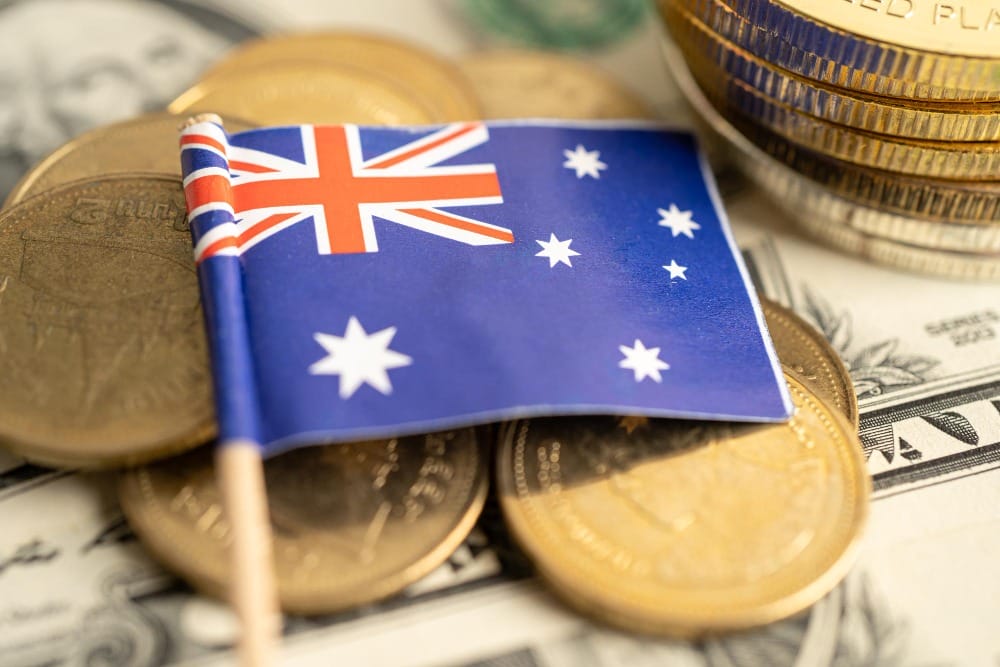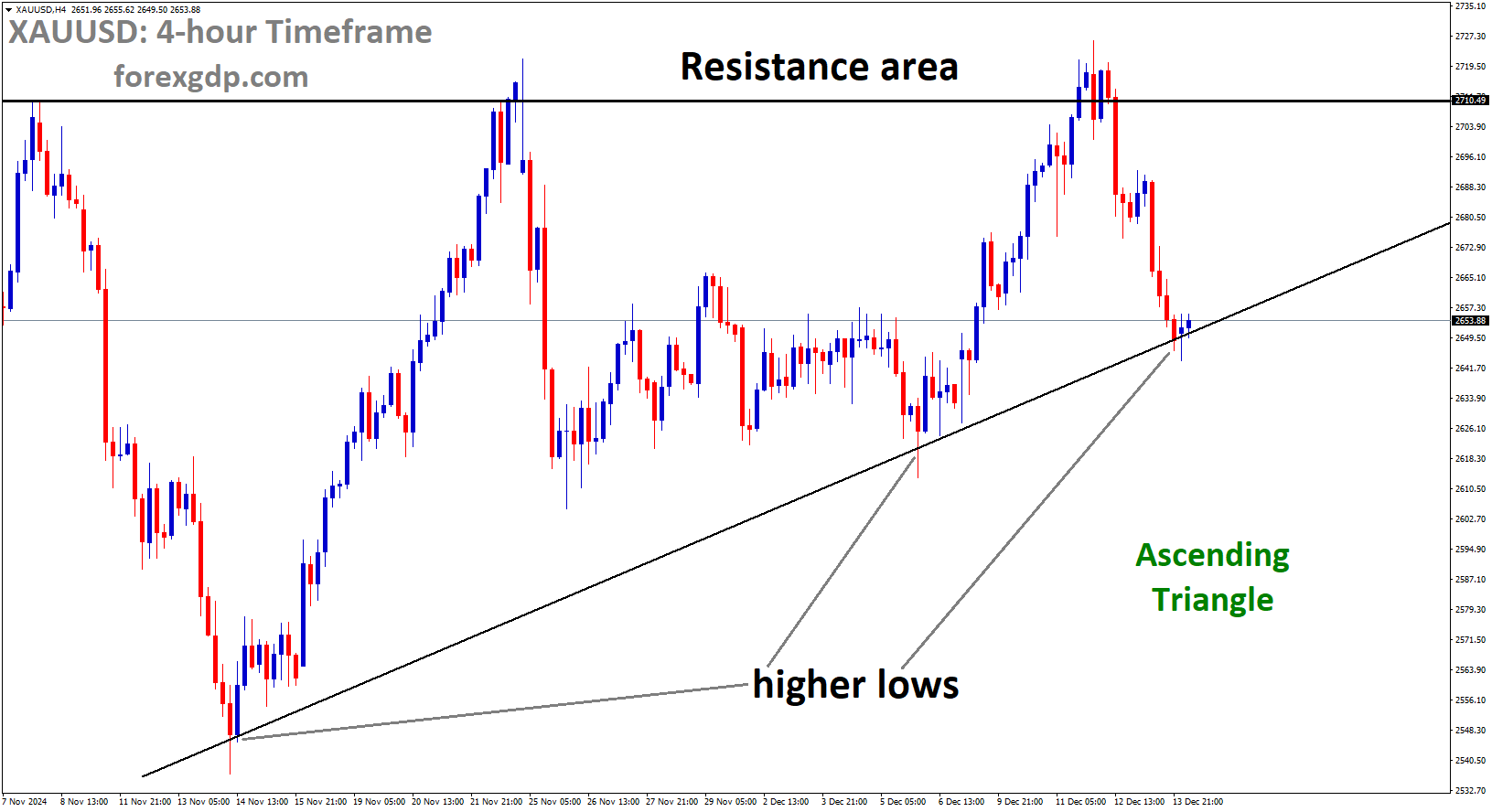AUD: AUD/JPY nears 102.00 as RBA maintains policy rate
The RBA Monetary policy meeting May month happened today. The rates are kept at 4.35%.Inflation is increasing in the March month when compared to Previous month. Business confidence data is improving, consumer spending is slight higher in this summer month. Analysts predicted 3.10% rate in December 2025 from the current rate.
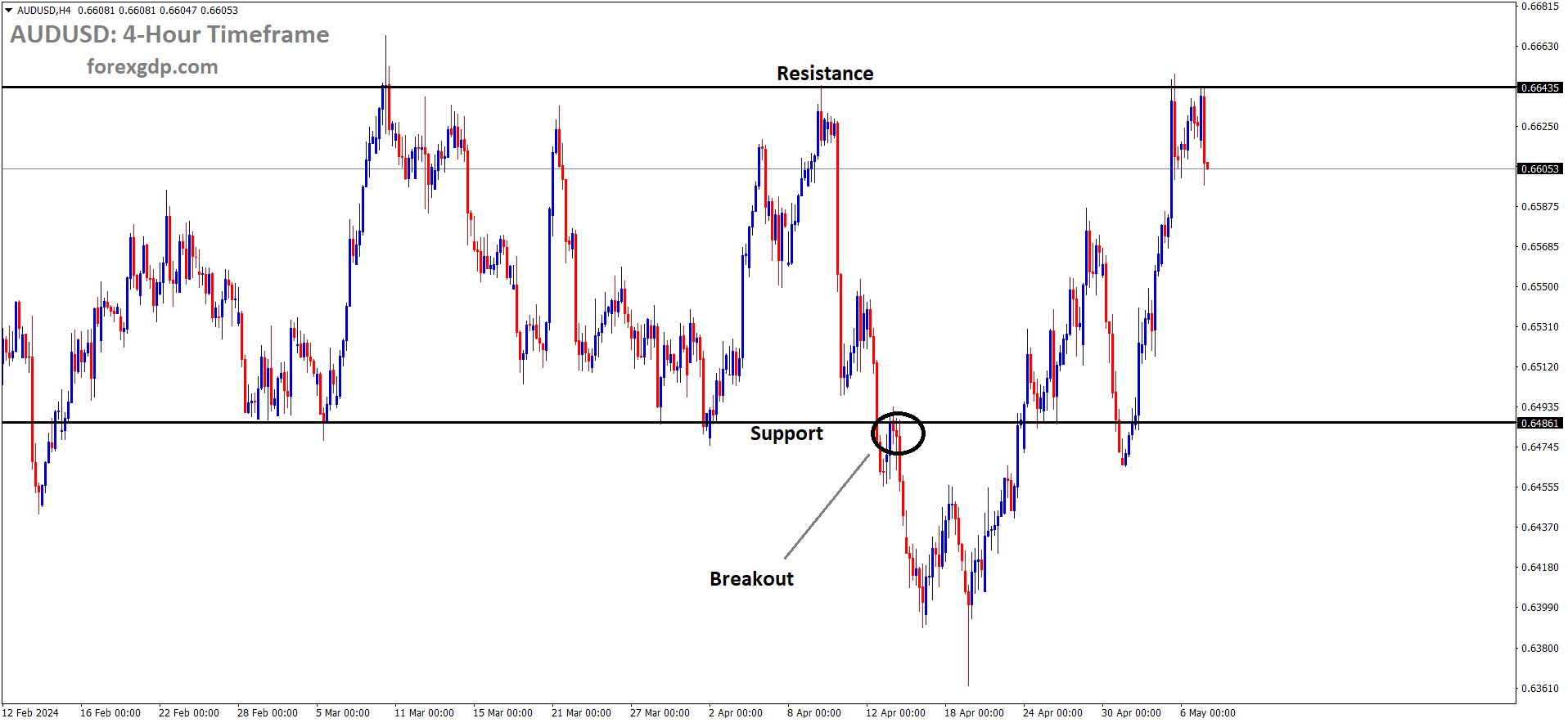
AUDUSD is moving in box pattern and market has fallen from the resistance area of the pattern
During the Asian trading hours on Tuesday, AUD/JPY was observed hovering around the 102.20 mark. The Australian Dollar (AUD) encountered a notable development following the Reserve Bank of Australia’s (RBA) decision to maintain its interest rates at 4.35%, aligning with expectations set for Tuesday’s meeting. This choice appears to be influenced by the recent revelation that Australian inflation surpassed forecasts last week.
Australia faced a decline in inflation in the first quarter, marking the fifth consecutive period of deceleration despite initial predictions being exceeded. Moreover, March witnessed a surge in the country’s monthly CPI indicator, contrary to market expectations of stagnation.
Analysts at Commonwealth Bank and Westpac have projected that the RBA’s interest rates may have reached their peak at 4.35% in November 2023, with a gradual decline expected to reach 3.10% by December 2025.

Meanwhile, the prevailing risk-on sentiment continues to apply pressure on safe-haven currencies like the Japanese Yen (JPY). Earlier on Tuesday, Masato Kanda, Japan’s chief currency diplomat, hinted at potential measures to address excessive market fluctuations.
Last week, the Japanese Yen (JPY) experienced appreciation amid speculation of government intervention by Japanese authorities. Reuters reported data from the Bank of Japan (BoJ), suggesting that Japanese authorities may have allocated approximately ¥6.0 trillion on April 29 and ¥3.66 trillion on May 1 to bolster the JPY.
AUD: RBA Statement: No Change in Monetary Policy
The RBA Left interest rates unchanged at 4.35% today, The Australian Dollar moved down after the decision came. Analysts predicted RBA keep interest rates at 4.35% in 2024 and gradually decreased by 3.10% in December 2025. Inflation is decreasing in the Fifth consecutive quarter as expected by RBA, But sudden increase in the March 2024 makes light fears on RBA whether to cut the rates or not. So RBA kept its monetary pace in the current stance only until the inflation come down to 2% target.
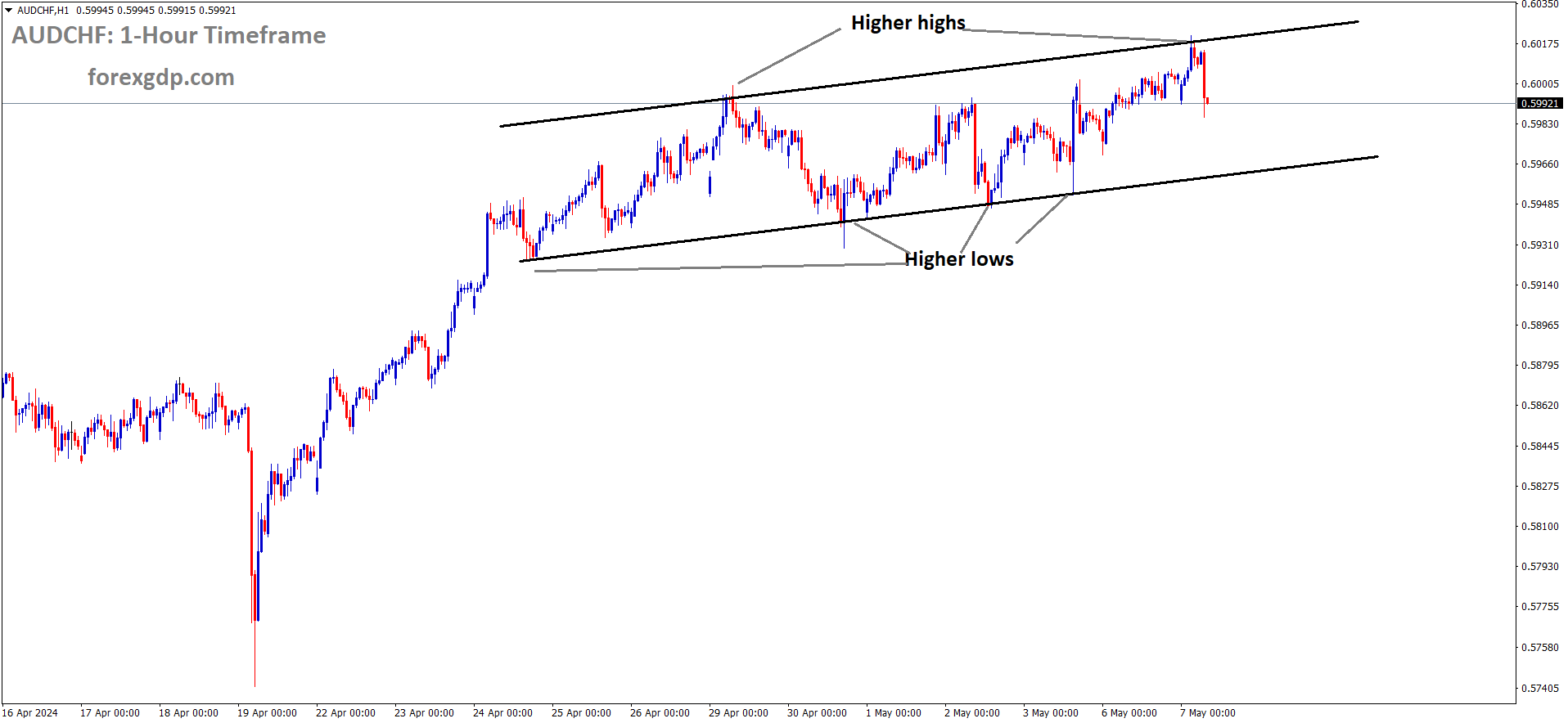
AUDCHF is moving in Ascending channel and market has fallen from the higher high area of the channel
At its meeting today, the Reserve Bank Board opted to maintain the current cash rate target at 4.35 per cent and left the interest rate paid on Exchange Settlement balances steady at 4.25 per cent.
Inflation persists at elevated levels but is showing a slower decline than initially anticipated. Recent data indicates a continued moderation in inflation, albeit at a slower pace than forecasted. The Consumer Price Index (CPI) rose by 3.6 per cent over the year to the March quarter, down from 4.1 per cent in the year to December. Notably, underlying inflation, which excludes volatile items, remained higher than headline inflation and experienced a milder decline. This trend is largely attributed to sustained high services inflation, which is gradually moderating.
While higher interest rates have been effective in aligning aggregate demand and supply, there are ongoing indications of excess demand in the economy, coupled with robust domestic cost pressures encompassing both labor and non-labor inputs. Labor market conditions have eased somewhat over the past year but still remain tighter than optimal for sustained full employment and inflation within target bounds. Wage growth, though having peaked, remains above levels sustainable given trend productivity growth. Meanwhile, inflationary pressures continue to impact real incomes, contributing to subdued household consumption growth and consequently sluggish output growth.
The economic outlook remains highly uncertain. The central forecasts, premised on the assumption that the cash rate follows market expectations, anticipate inflation to gradually return to the target range of 2–3 per cent in the latter half of 2025, reaching the midpoint in 2026. Near-term inflation is expected to be elevated due to recent increases in domestic petrol prices and higher-than-expected services price inflation, which is forecasted to decline more slowly throughout the remainder of the year. However, inflation is projected to ease over the subsequent years.
Persisting uncertainties surround the trajectory of services inflation, which is expected to moderate at a slower pace than previously envisaged, reflecting robust labor market conditions and heightened growth in unit labor costs. Moreover, household consumption growth has been hampered by high inflation and earlier interest rate hikes, resulting in restrained real disposable income. While real incomes are anticipated to stabilize and grow later in the year, there exists a risk of a slower-than-expected pickup in household consumption, leading to continued subdued output growth and a noticeable deterioration in the labor market.

Furthermore, uncertainties persist regarding the transmission lags of monetary policy and the responsiveness of firms’ pricing decisions and wages amidst a slowing economy with lingering excess demand and tight labor market conditions.
Geopolitical uncertainties, including conflicts in regions like the Middle East and Ukraine, add to the global economic uncertainty despite improvements in the outlook for major economies such as China and the United States, along with an uptick in global commodity prices.
Returning inflation to target remains the primary objective of the Reserve Bank Board, in line with its mandate for price stability and full employment. Medium-term inflation expectations have thus far been consistent with the target range, necessitating continued vigilance to potential upside risks. The Board emphasizes the importance of maintaining sustainable progress towards the inflation target and remains open to adjusting interest rates as needed, contingent upon evolving economic data and risk assessments. Close monitoring of global economic developments, domestic demand trends, and inflation and labor market outlooks will guide the Board’s decisions as it remains committed to its inflation targeting mandate.
AUD: RBA Holds Interest Rate at 4.35% Amid Elevated Inflation
Today, the Reserve Bank of Australia (RBA) announced its decision to maintain interest rates at the current level of 4.35%. Following this announcement, the Australian Dollar experienced a downward movement. Analysts had anticipated the RBA to keep interest rates steady at 4.35% throughout 2024, with a gradual decrease to 3.10% by December 2025.
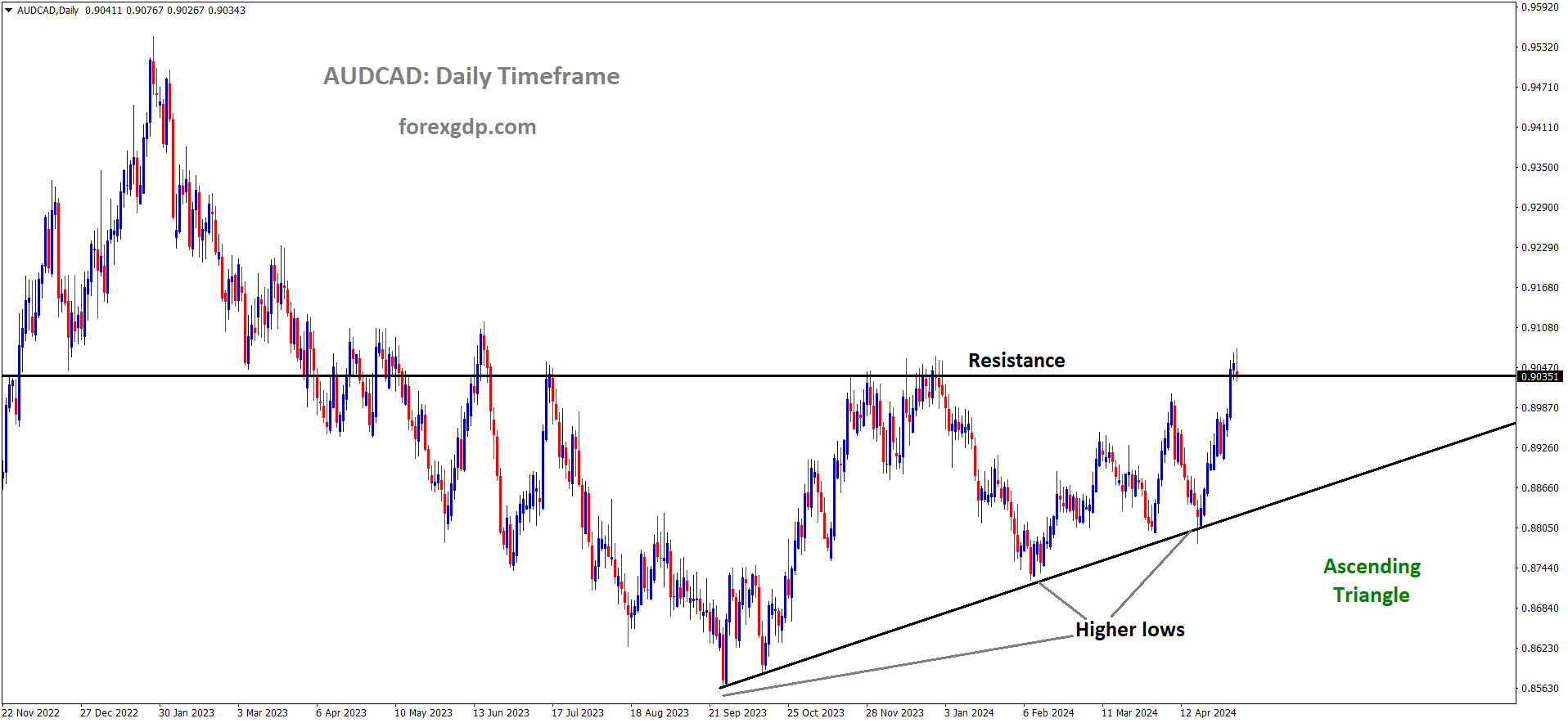
AUDCAD is moving in Ascending Triangle and market has reached resistance area of the pattern
Inflation in Australia has been on a downward trajectory for the fifth consecutive quarter, in line with the RBA’s expectations. However, a notable increase in inflation was observed in March 2024, prompting concerns within the RBA about whether to adjust interest rates. Despite this inflationary uptick, the RBA opted to maintain its current monetary policy stance, signaling a cautious approach until inflation reaches the target range of 2%.
The decision reflects the RBA’s commitment to carefully balancing economic stability and inflation management. By keeping interest rates unchanged, the RBA aims to support sustainable economic growth while ensuring that inflation remains within the desired range over the medium term.
The Reserve Bank’s decision to keep interest rates steady at 4.35% marks a continuation of its cautious stance, sparing borrowers from a 14th consecutive rate adjustment. Despite persistent inflationary pressures, the central bank refrained from adopting a “tightening bias,” indicating uncertainty regarding further rate increases.
The RBA’s decision to maintain the cash rate unchanged for the fourth consecutive meeting was widely anticipated, with only one economist, Capital Economics, predicting a rate hike. Interestingly, the language in the RBA’s statement remained unchanged, noting that recent data suggests inflation is moderating but at a slower pace than anticipated. Emphasizing the importance of maintaining consistent medium-term inflation expectations, the bank reiterated its commitment to its inflation target.
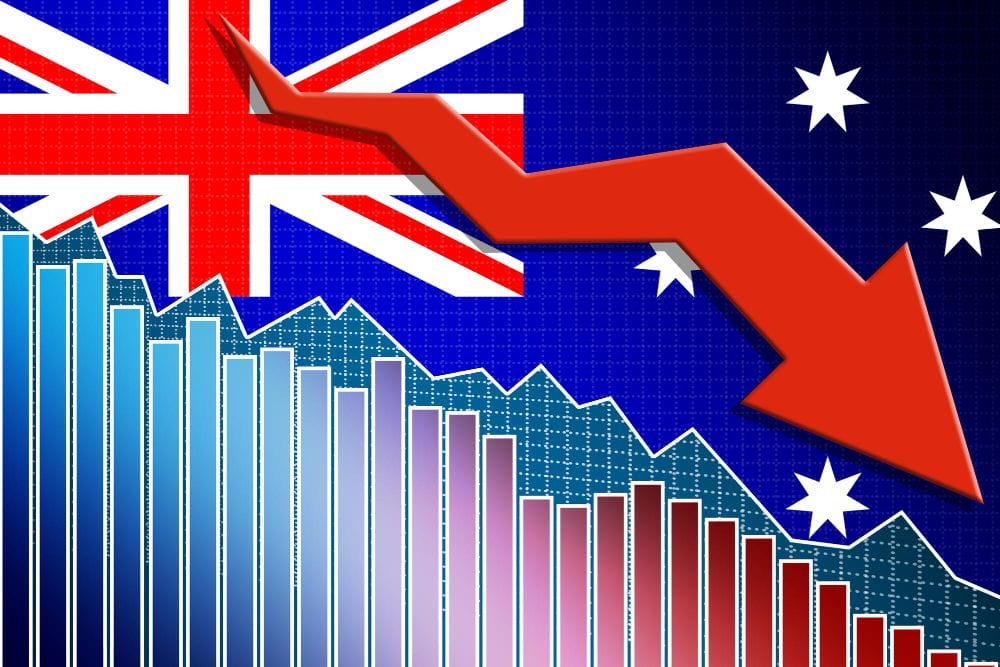
The absence of more hawkish language in the statement led to a slight decline in the Australian dollar against the US dollar, while stocks extended their gains following the announcement. Prior to the unexpected release of higher-than-expected inflation figures for the March quarter, most economists and investors had been anticipating rate cuts from as early as September.
Australia’s relatively slow pace in raising interest rates, coupled with lower rates compared to other comparable economies, reflects the cautious approach of the RBA. Despite higher inflation, Australian interest rates remain lower than those in the US and the UK. However, with Australians facing the fastest increase in borrowing costs in three decades and the RBA having a dual mandate to maintain full employment alongside battling inflation, the bank can afford to exercise patience.
Moving forward, analysts will closely monitor RBA Governor Michele Bullock’s comments during the press conference for any indications of a shift towards tighter monetary policy. Additionally, scrutiny will be directed towards next week’s federal budget to assess the extent to which the government’s fiscal measures align with or counteract the RBA’s efforts to contain inflation.
Don’t trade all the time, trade forex only at the confirmed trade setups
Get more confirmed trade signals at premium or supreme – Click here to get more signals , 2200%, 800% growth in Real Live USD trading account of our users – click here to see , or If you want to get FREE Trial signals, You can Join FREE Signals Now!

